Winter is a great time to visit lakes, ponds and other wetland areas to look for overwintering ducks, geese and swans. A lot of ducks fly to Britain from colder parts of Europe to spend the winter on our lakes and ponds, joining our resident ducks. Visit some lakes over the winter and see how many different ones you can find. Here are some to look for. Males are usually much more brightly coloured than females, which tend to be brown, so it is best to look out for the males.
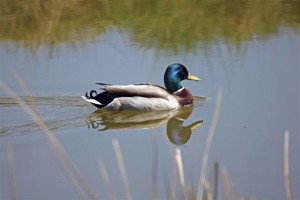 Mallard
Mallard
One of our commonest ducks often seen on small ponds in parks and gardens as well as on large lakes. The male has a shiny green head with a white ring around his neck.
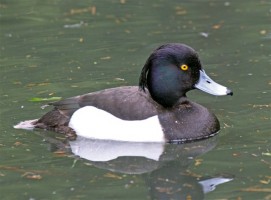 Tufted Duck
Tufted Duck
Male Tuftys are black with a big white patch on their side. They also have a small tuft of feathers at the back of the head, which gives them their name.
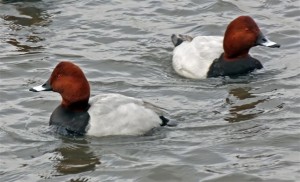 Pochard
Pochard
The male has a grey body, sandwiched between a black bottom and chest, and a dark red head and neck.
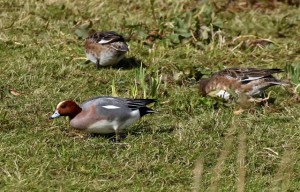 Wigeon
Wigeon
A pretty duck that is often seen grazing in large groups on banks and fields near water. It makes a high whistling noise. Males have mainly grey bodies with a pink chest and a black and white bottom. The head is reddish-brown with a pale strip down the centre.
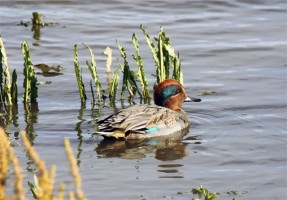 Teal
Teal
This is a tiny duck, smaller than all the others. The male has a brown head with a large glossy green patch at the side, including around his eye. He also has a characteristic creamy-yellow patch on his bottom.
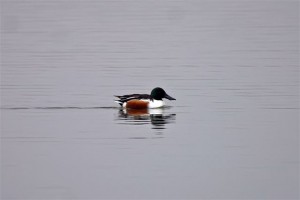 Shoveler
Shoveler
The Shoveler gets its name from its bill, which is much bigger and flatter than those of other ducks. The males body id white with a big brown patch on the side and a black bottom. His head is glossy green with a yellow eye.
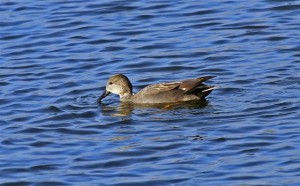 Gadwall
Gadwall
The male Gadwall is less colourful than most of the other ducks. His body is mainly grey with a black bottom and a small white patch in front of the black.
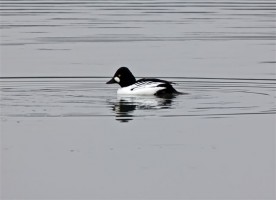 Goldeneye
Goldeneye
Males have a large, glossy green head with a small white patch in front of the eye which, as its name suggests, is golden yellow. The body is mainly white with a black back and tail.
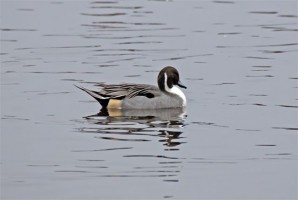 Pintail
Pintail
Males have some long tail feathers, which give this duck its name. They also have a long neck which has a white stripe extending from the back of the head into the white chest.
Here is an identification chart featuring these photographs for you to download and print to take out with you.
Where can I look for wintering ducks?
Here are a few places you could visit to look for ducks in winter. Try and count the numbers of each species. Let us know what you see.
Bedfordshire
- Priory Country Park – near Bedford
- Harrold-Odell Country Park
- Millennium Country Park (Forest Centre), Marston Moretaine
- Felmersham Nature Reserve
- Rushmere Country Park, near Heath & Reach
Further Afield
- Willen Lake, Milton Keynes
- College Lake Nature Reserve, near Tring
- Tring Reservoirs
- Amwell Nature Reserve, near Ware
- Rye Meads Nature Reserve, near Hoddesdon
- Grafham Water, near Huntingdon
- Ouse Washes, especially the Wildfowl & Wetlands Trust
- Reserve
- Summer Leys Nature Reserve, near Wellingborough
- Paxton Pits Nature Reserve, near St. Neots
